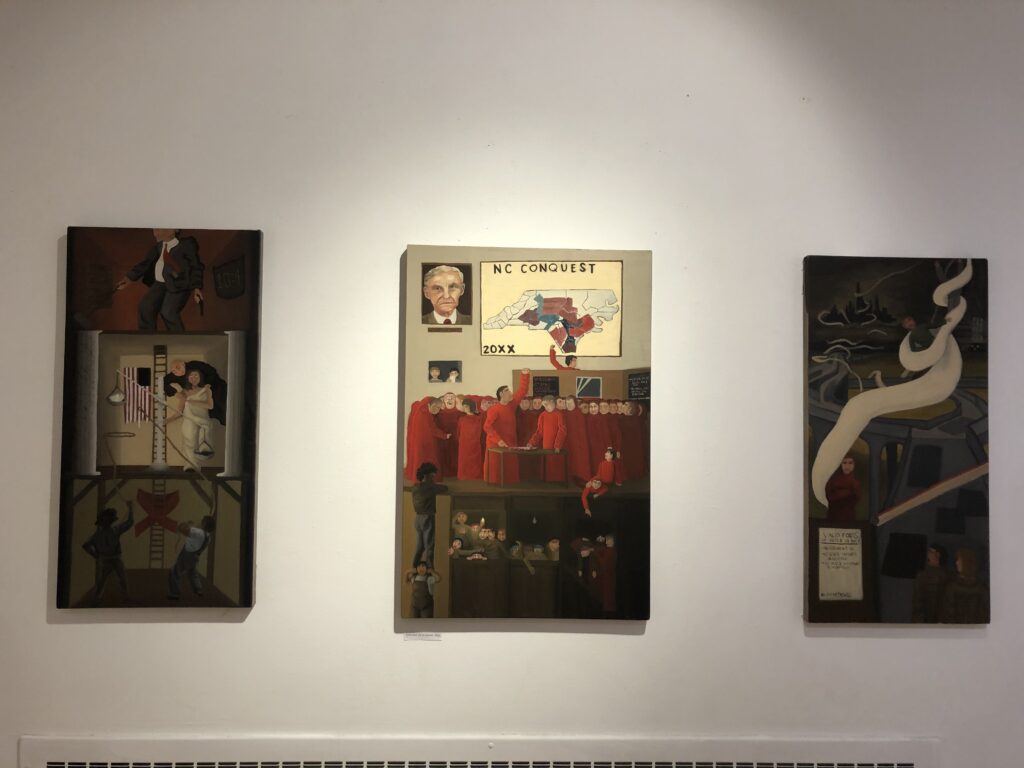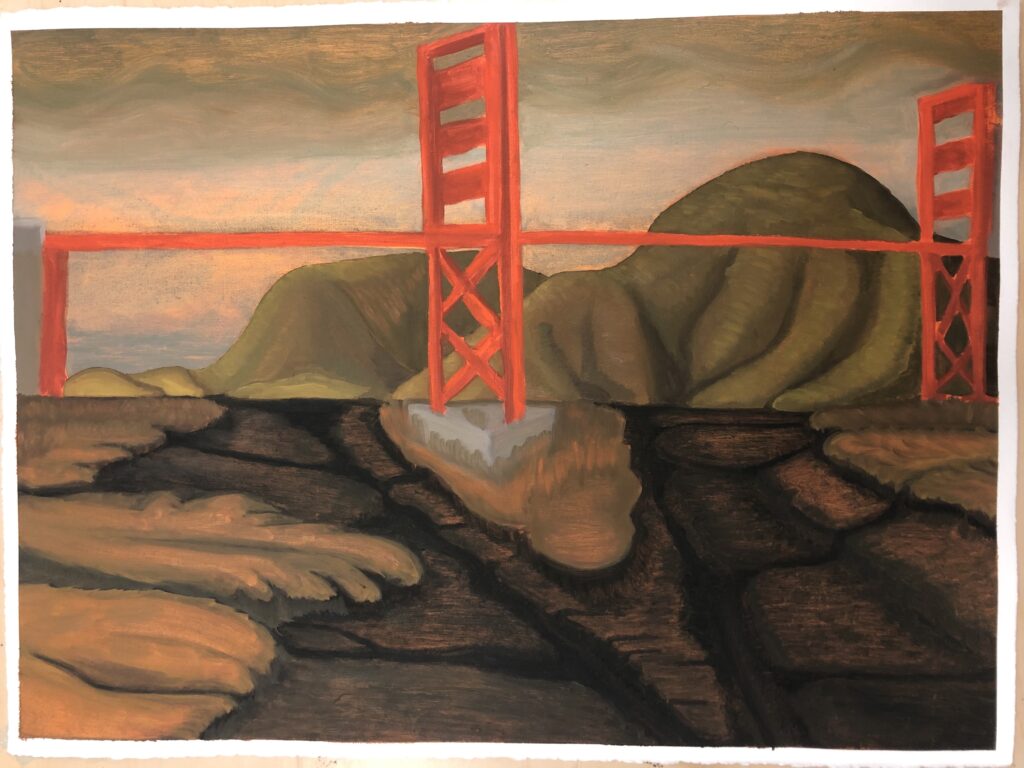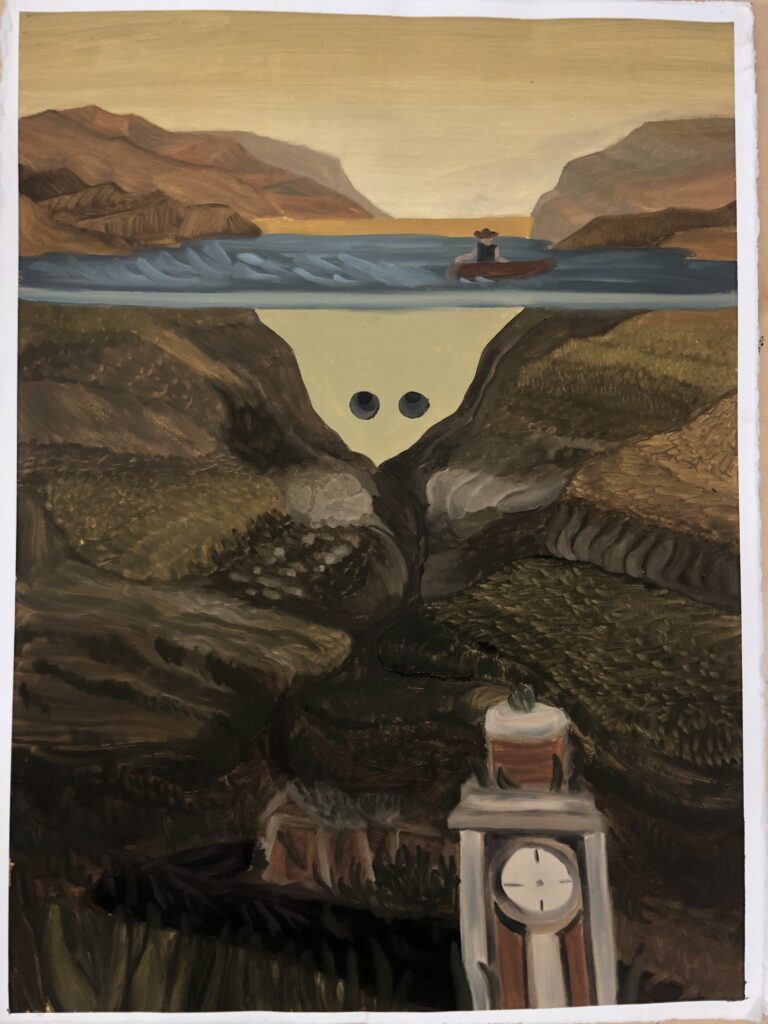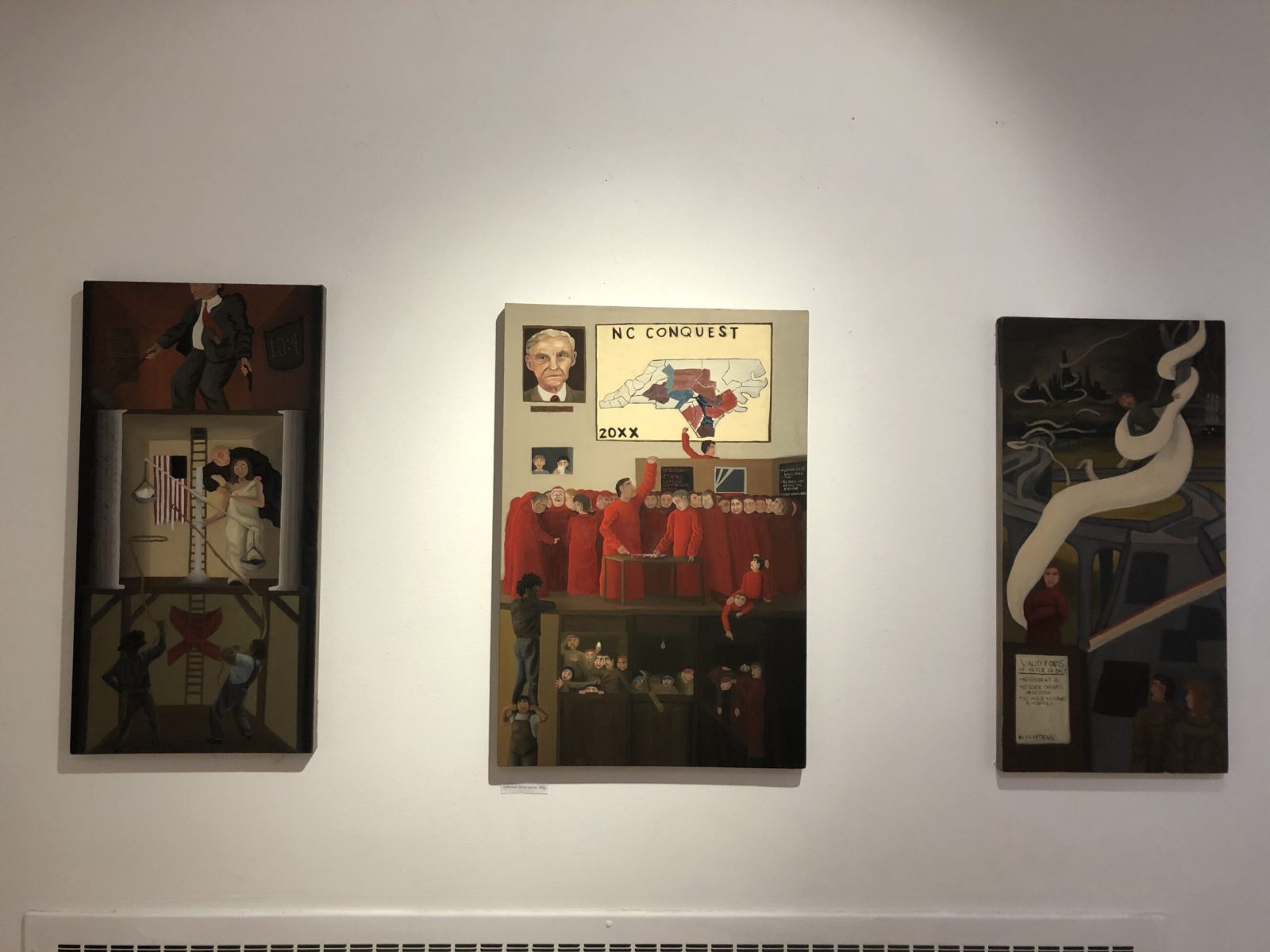Social Ills: I Am Angry About The Things I Cannot Change Yet
Social Ills was a series dedicated to visually exposing the sabotage tactics used in U.S. politics, specifically gerrymandering, Voter ID laws, and judicial manipulation. Alongside that were pieces investigating the relationship between environmental destruction and, communal memory, and time. This series exhibited at the Sesnon Underground in Santa Cruz, CA during May 2022. Social Ills was made possible by funding provided by the Irwin Family.

This triptych was created with the process of gerrymandering affecting policies of communities. Barriers such as voting ID laws, lifelong terms for judges, and inaccessibility of the education concerning constituent’s rights all contribute to the ease that certain politicians have when displacing communities in order to guarantee reelection. Will these politicians acurately represent a community? Barely– gerrymandering is a selfish and cowardly habit that both parties in America participate in. The term “ratfucked” is slang for political sabotage, which political parties engage in to win elections.
Gallery hanging of “Ratfucked” Triptych from the Social Ills Series
This triptych was created with the process of gerrymandering affecting policies of communities. Barriers such as voting ID laws, lifelong terms for judges, and inaccessibility of the education concerning constituent’s rights all contribute to the ease that certain politicians have when displacing communities in order to guarantee reelection. Will these politicians acurately represent a community? Barely– gerrymandering is a selfish and cowardly habit that both parties in America display. The term “ratfucked” is slang for political sabotage, which political parties engage in to win elections.

“S.F. 4,000 A.D.”
Oil on Rives BFK, 18″ by 24″, 2021.
It’s widely theorized by geologists that the San Fransiscan Bay will become a marshland before the year 4,000. Sediment from the mountains, waste from the inhabitants, and debris from vessels all contributes to this gradual filling of one of the most prolific ports in the world. By the time the bay fills it’s possible that humans will be extinct from this planet. But will our infrastructure surpass us? Will our highways and concrete jungles enter the geologic timescale? Certainly our waste will, marking the Anthropocene with a plastic vengeance. Regardless of the apocalyptic thrills that popular media assures us of, knowing that evidence of the city that held millions of lives could remain is a blessing only the architects of the bridge could’ve dreamed of.

“Our Town”
Countless communities, grazing valleys, and places of solitude have been extinguished from the sun for the pursuit of water expansion. These histories should not be lost to the depths. While the need for water can never be understated, politicians responsible for such choices seem to have little compassion or understanding for the places they flood.
From the TVA to the Glen Canyon Dam, man’s ability to alter the natural waterways of this earth for the benefit of the masses comes with equal consequences. Dams disrupt ecosystems, blocking migration routes for fish, eliminating habitats for native animals, and collects river sediment that would otherwise flow to the coast and replenish beaches. Yet careful water collection and distribution is necessary for agriculture, commerce, and civilians. There is no question that our way of life would be impossible without dams. However, in regards to stewardship with the land, there should be opportunities for remembrance and gratuity for what we can no longer explore and witness.
Already dams across America are falling. Either out of disrepair or intentionally, the sovereignty of native creature’s routes has won in places such as the Klamath River Dam in California. The question of if man’s modern needs can coexist with the creatures who travelled these river ways for millennia is being asked. I hope for an answer where the land can be protected to serve both communities for eons to come.

